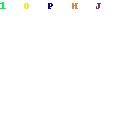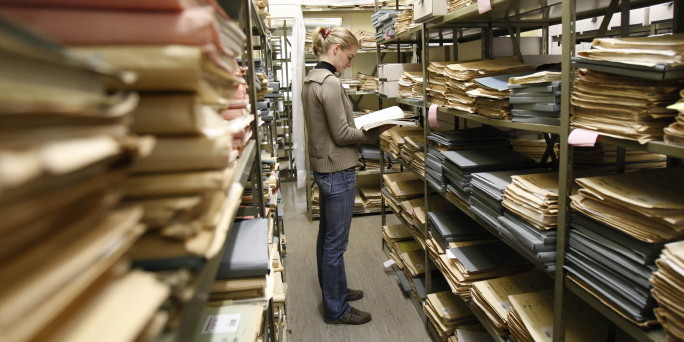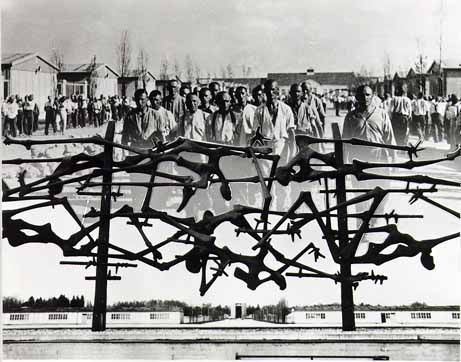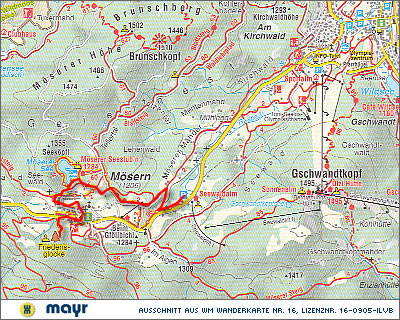KNOXVILLE TO FRANKFURT

| 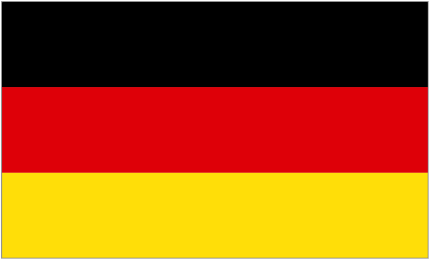  1850 - Paulskirche, Frankfurt (Germany). "Seat of course of the 1848-49 parliament [the first publicly and freely elected body of Germany], but also of the August 1850 international peace congress (of the peace movement). If I remember well, there are some reminders of this inside the building. I visited it at least once, when I received an invitation to attend the award of Germany’s most important peace prize, the one awarded by the German book trade (Friedenspreis des Deutschen Buchhandels). The annual ceremony is being held here. In my view, it comes second, after the Nobel, in terms of the elaborateness of the ceremony, the dignity of the occasion, the standing in the country, the documentation which is produced, etc. It follows the Nobel at some distance, but that is inevitable (no royalty involved, the prize money is less, the outside world hardly takes notice, etc.). It has interesting origins, not long after World War II." 1850 - Paulskirche, Frankfurt (Germany). "Seat of course of the 1848-49 parliament [the first publicly and freely elected body of Germany], but also of the August 1850 international peace congress (of the peace movement). If I remember well, there are some reminders of this inside the building. I visited it at least once, when I received an invitation to attend the award of Germany’s most important peace prize, the one awarded by the German book trade (Friedenspreis des Deutschen Buchhandels). The annual ceremony is being held here. In my view, it comes second, after the Nobel, in terms of the elaborateness of the ceremony, the dignity of the occasion, the standing in the country, the documentation which is produced, etc. It follows the Nobel at some distance, but that is inevitable (no royalty involved, the prize money is less, the outside world hardly takes notice, etc.). It has interesting origins, not long after World War II."
|

|   Date? - Deutsches Albert Schweitzer Zentrum, Wolfsgangstraße 109, Frankfurt (Germany). "Reverence for Life means: I am life that wants to live in the midst of life that wants to live." Albert Schweitzer this movement as the central message of his thinking left." "By the way, there is a large office promoting Albert Schweitzer's work in
Frankfurt. I visited it once, and it also has a permanent exhibition, if I
remember correctly. But it is not in the list of peace museums." Date? - Deutsches Albert Schweitzer Zentrum, Wolfsgangstraße 109, Frankfurt (Germany). "Reverence for Life means: I am life that wants to live in the midst of life that wants to live." Albert Schweitzer this movement as the central message of his thinking left." "By the way, there is a large office promoting Albert Schweitzer's work in
Frankfurt. I visited it once, and it also has a permanent exhibition, if I
remember correctly. But it is not in the list of peace museums."
|

|   September 10, 1996 - Oskar-Schindler-Gedenktafel, Hauptbahnhof 4, Frankfurt am Main (Germany). Inscribed, " In this house lived from 1965 to 1974, Oskar Schindler. During the period of National Socialism, he saved over 1,200 Jews from death in Auschwitz and other camps
A tree grows in Israel, which says what can courage. A tree grows at Yad Vashem, the inertia of deeply ashamed.
A tree grows in Israel, which asks who will help today.
Dieter Trautwein." "There is a plakette / plaque dedicated to Oscar
Schindler [1908-1974] on a building opposite the central railway station, if I remember
correctly. It is in any case in the city centre, where I happened to come
across it." September 10, 1996 - Oskar-Schindler-Gedenktafel, Hauptbahnhof 4, Frankfurt am Main (Germany). Inscribed, " In this house lived from 1965 to 1974, Oskar Schindler. During the period of National Socialism, he saved over 1,200 Jews from death in Auschwitz and other camps
A tree grows in Israel, which says what can courage. A tree grows at Yad Vashem, the inertia of deeply ashamed.
A tree grows in Israel, which asks who will help today.
Dieter Trautwein." "There is a plakette / plaque dedicated to Oscar
Schindler [1908-1974] on a building opposite the central railway station, if I remember
correctly. It is in any case in the city centre, where I happened to come
across it."

|



| 
 Deutsche Reisemobil Vermietungs GmbH (DRM) ("der größten deutschen Wohnmobilvermietung").
Frankfurt depot, Kleiner Kornweg 2-4, 65451, Frankfurt-Kelsterbach (Germany). Telephone +49(0)6107-7500-0.
The opening hours of our depots are as follows:
From April to September : Monday to Friday from 8 a.m. to 6 p.m.
The pick up and drop off times in our depots are as follows:
From April to September : Monday to Friday: from 3 p.m. to 5 p.m. - drop off at 9 a.m. to 10 a.m.
Deutsche Reisemobil Vermietungs GmbH (DRM) ("der größten deutschen Wohnmobilvermietung").
Frankfurt depot, Kleiner Kornweg 2-4, 65451, Frankfurt-Kelsterbach (Germany). Telephone +49(0)6107-7500-0.
The opening hours of our depots are as follows:
From April to September : Monday to Friday from 8 a.m. to 6 p.m.
The pick up and drop off times in our depots are as follows:
From April to September : Monday to Friday: from 3 p.m. to 5 p.m. - drop off at 9 a.m. to 10 a.m.
|
FRANKFURT to STEINHEIM (184 km)
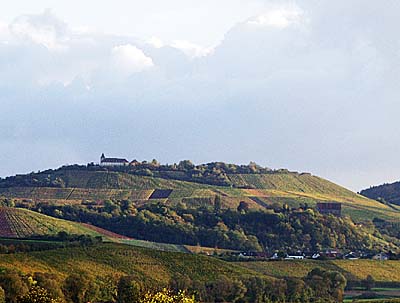
| P
A
R
K |   - Naturpark Stromberg-Huechelberg (Germany). "Counts with an area of 330 sq km to the smaller nature parks in Baden-Württemberg and Germany. Small is beautiful: with their landscape and well-being of its central location between the metropolitan areas of Stuttgart, Heilbronn, Karlsruhe and Pforzheim arising for the park is particularly important as compensation and recovery room for an increasingly urbanized society. // The park has a new home. Of May 2009 opened on Zaberfeld reservoir Ehmetsklinge the new Nature Centre with the premises of the office and experience a show for young and old. Nach dem Motto "Wein. Wald. Wohlfühlen." Under the slogan "wine. Forest. Relax." informs the exhibition of all facets of the wine-forest region, and appetite to make a visit to the many attractions in the park." - Naturpark Stromberg-Huechelberg (Germany). "Counts with an area of 330 sq km to the smaller nature parks in Baden-Württemberg and Germany. Small is beautiful: with their landscape and well-being of its central location between the metropolitan areas of Stuttgart, Heilbronn, Karlsruhe and Pforzheim arising for the park is particularly important as compensation and recovery room for an increasingly urbanized society. // The park has a new home. Of May 2009 opened on Zaberfeld reservoir Ehmetsklinge the new Nature Centre with the premises of the office and experience a show for young and old. Nach dem Motto "Wein. Wald. Wohlfühlen." Under the slogan "wine. Forest. Relax." informs the exhibition of all facets of the wine-forest region, and appetite to make a visit to the many attractions in the park."
|

| C
A
M
P |   - Stromberg Camping, Diefenbacher Straße 70, 75438 Knittlingen-Freudenstein (Germany).
fon +49 (0)7043 2160,
fax +49 (0)7043 40405,
info@strombergcamping.de - Stromberg Camping, Diefenbacher Straße 70, 75438 Knittlingen-Freudenstein (Germany).
fon +49 (0)7043 2160,
fax +49 (0)7043 40405,
info@strombergcamping.de
|



| P
U
B |   - Brückenhaus, Ludwigsburger Str 2,
Benningen am Neckar (Germany). "immer mittwochs...bei trockenem Wetter!! ab 17.30 Barbecue im Brückenhaus-Biergarten... ab 18.00 Uhr Live-Musik mit Frank, Alex oder Frank." - Brückenhaus, Ludwigsburger Str 2,
Benningen am Neckar (Germany). "immer mittwochs...bei trockenem Wetter!! ab 17.30 Barbecue im Brückenhaus-Biergarten... ab 18.00 Uhr Live-Musik mit Frank, Alex oder Frank."
|
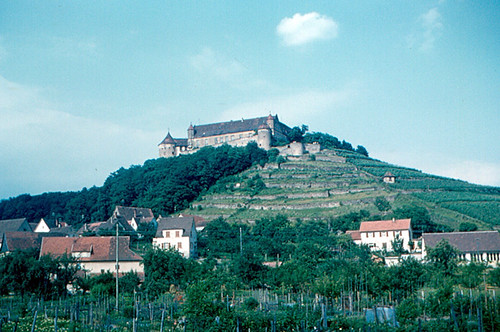


| P
U
B |   - StettenfelS - Burg, Schloss und Park, Stettenfels 4,
Untergruppenbach (Germany). +49 (0) 7131 9770 - 0. info@burg-stettenfels.de. "Since the 11th century, Stettenfels Castle has been positioned above the town, visible from afar. Today, the castle provides a special setting for events of all kinds. An eclectic cultural program presents something fitting each and every taste, from cabaret & plays to concerts of all styles. From spring through fall, culinary specialties are served in the umbrella bar and beer garden in combination with an extraordinary view of the region surrounding Stettenfels." - StettenfelS - Burg, Schloss und Park, Stettenfels 4,
Untergruppenbach (Germany). +49 (0) 7131 9770 - 0. info@burg-stettenfels.de. "Since the 11th century, Stettenfels Castle has been positioned above the town, visible from afar. Today, the castle provides a special setting for events of all kinds. An eclectic cultural program presents something fitting each and every taste, from cabaret & plays to concerts of all styles. From spring through fall, culinary specialties are served in the umbrella bar and beer garden in combination with an extraordinary view of the region surrounding Stettenfels."
|
STEINHEIM to BESIGHEIM (16 km)


| 
 Date? - Rathaus, Marktplatz, Besigheim (Germany). Scene of wedding on August 6. Lunch afterwards in "Olive" restaurant (pink building in right of image), Marktplatz 2, 74354 Besigheim, +49 (0)7143 96 77 63 (no website). " On magic square [sic] is the "Olive," a Mediterranean restaurant with an oriental touch to the dishes. The appetizers alone make the "Olive" a valuable address. While the boss of the house charming with his colleague, the tables outside consults and operated, the brother of the tastiest dishes cooked in a stylish kitchen. Especially recommended the stuffed chicken breast with apricot iszt and bulgur. Excellent prepared! The wines are good as expected. A nice selection of local and Mediterranean bottles, the wine list, encouraging the selection of open wine. Finally a Araq, a 53% strength anise. Conclusion: Very nice ambience, excellent food, great wines and a truly helpful staff - EVERYTHING HERE AGREES!"
Date? - Rathaus, Marktplatz, Besigheim (Germany). Scene of wedding on August 6. Lunch afterwards in "Olive" restaurant (pink building in right of image), Marktplatz 2, 74354 Besigheim, +49 (0)7143 96 77 63 (no website). " On magic square [sic] is the "Olive," a Mediterranean restaurant with an oriental touch to the dishes. The appetizers alone make the "Olive" a valuable address. While the boss of the house charming with his colleague, the tables outside consults and operated, the brother of the tastiest dishes cooked in a stylish kitchen. Especially recommended the stuffed chicken breast with apricot iszt and bulgur. Excellent prepared! The wines are good as expected. A nice selection of local and Mediterranean bottles, the wine list, encouraging the selection of open wine. Finally a Araq, a 53% strength anise. Conclusion: Very nice ambience, excellent food, great wines and a truly helpful staff - EVERYTHING HERE AGREES!"
|



|   Date? - , Schloßhotel Monrepos, Domäne Monrepos 22, 71634 Ludwigsburg (Germany). Only hotel suggested so far. Date? - , Schloßhotel Monrepos, Domäne Monrepos 22, 71634 Ludwigsburg (Germany). Only hotel suggested so far.
|
BESIGHEIM to STUTTGART (32 km)

|   Date? - Stuttgart (Germany). See guide books.
"Stuttgart Region has a population of 2.7 million, the third biggest urban area in Germany after the Ruhr Area and Berlin. Spread across a variety of hills (some of them vineyards), valleys and parks - unusual for a German city and often a source of surprise to visitors who primarily associate the city with its industrial reputation as the 'cradle of the automobile'." Date? - Stuttgart (Germany). See guide books.
"Stuttgart Region has a population of 2.7 million, the third biggest urban area in Germany after the Ruhr Area and Berlin. Spread across a variety of hills (some of them vineyards), valleys and parks - unusual for a German city and often a source of surprise to visitors who primarily associate the city with its industrial reputation as the 'cradle of the automobile'."
|

|   July 16, 1904 - Bismarcktürme / Bismarck Tower, Killesbergpark (Höhenpark Killesberg), Stuttgart (Germany). "Bismarck Towers are a unique German monument genre, to honor the ex-chancellor Otto von Bismarck [1815-1898]. Approximately 250 of these towers were built between the German unification and the National Socialist takeover, between 1869 and 1934. They were built in various styles, on four continents (Australia, South America, Africa and Europe). Of those 250 about 170 remain." Also in Tübingen. July 16, 1904 - Bismarcktürme / Bismarck Tower, Killesbergpark (Höhenpark Killesberg), Stuttgart (Germany). "Bismarck Towers are a unique German monument genre, to honor the ex-chancellor Otto von Bismarck [1815-1898]. Approximately 250 of these towers were built between the German unification and the National Socialist takeover, between 1869 and 1934. They were built in various styles, on four continents (Australia, South America, Africa and Europe). Of those 250 about 170 remain." Also in Tübingen.
|

|   1953-1957 - Birkenkopf / Rubble Hill, south west of Stuttgart (Germany). Plaque says, "raised 40.2 meters from 1953 to 1957 / by piling up 1.5 million cubic meters of rubble from Stuttgart which had been 45% destroyed by 53 air attacks during WW-II." There is a path going up to the cross at the top. Now a popular area for short hikes. Refered to locally as "Monte Scherbelino," a jocular Italian-sounding name based on the German word Scherbe, meaning "shard" - "Mountain of shards." Info & Image from Mark Hatlie. 1953-1957 - Birkenkopf / Rubble Hill, south west of Stuttgart (Germany). Plaque says, "raised 40.2 meters from 1953 to 1957 / by piling up 1.5 million cubic meters of rubble from Stuttgart which had been 45% destroyed by 53 air attacks during WW-II." There is a path going up to the cross at the top. Now a popular area for short hikes. Refered to locally as "Monte Scherbelino," a jocular Italian-sounding name based on the German word Scherbe, meaning "shard" - "Mountain of shards." Info & Image from Mark Hatlie.
|


|   August 30, 2007 - Memorial to Deserters, Theaterhaus, Stuttgart (Germany). Smaller "postive" figure in front of larger "negative" figure. Awaits a more permanent location in downtown Stuttgart. NB: More than 15,000 men were executed for desertion by the Nazi regime. This monument was opposded by all political parties. The federal government argued that "Deserters are people who avoid their responsibility to the community." Info & Image from Mark Hatlie. August 30, 2007 - Memorial to Deserters, Theaterhaus, Stuttgart (Germany). Smaller "postive" figure in front of larger "negative" figure. Awaits a more permanent location in downtown Stuttgart. NB: More than 15,000 men were executed for desertion by the Nazi regime. This monument was opposded by all political parties. The federal government argued that "Deserters are people who avoid their responsibility to the community." Info & Image from Mark Hatlie.

|
STUTTGART ro TUBINGEN (44 km)
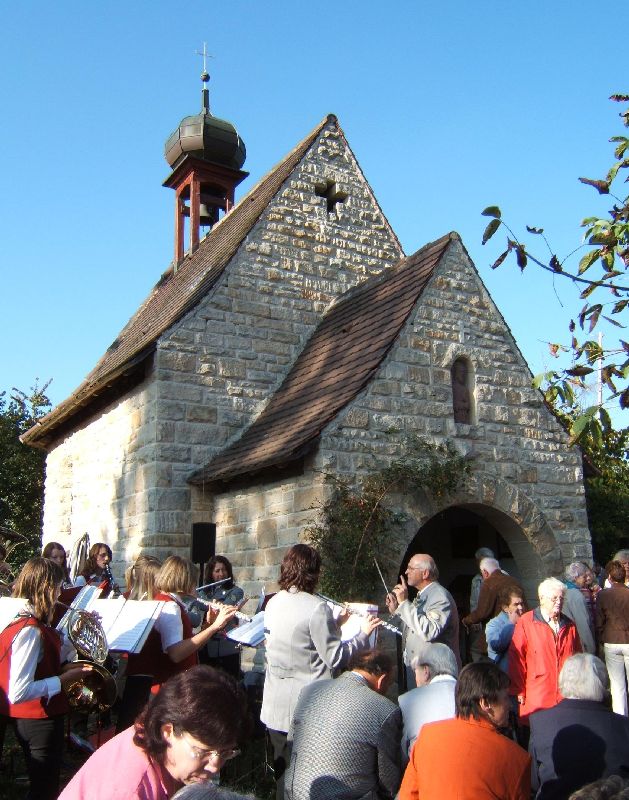

|   1947 - Tannenrainkapelle, Tannenrain Hill, Oberndoff (part of Rpottemburg), between Herrenberg & Tübingen (Germany). "Wayside chapel 'in honor of the Mother of God, a Via Dolorosa'" constructed after this small town was hit by stray bombs during WW-II. Connected to feelings of guilt about the nearby concentration camp, in which locals were complicit? 1947 - Tannenrainkapelle, Tannenrain Hill, Oberndoff (part of Rpottemburg), between Herrenberg & Tübingen (Germany). "Wayside chapel 'in honor of the Mother of God, a Via Dolorosa'" constructed after this small town was hit by stray bombs during WW-II. Connected to feelings of guilt about the nearby concentration camp, in which locals were complicit?

|
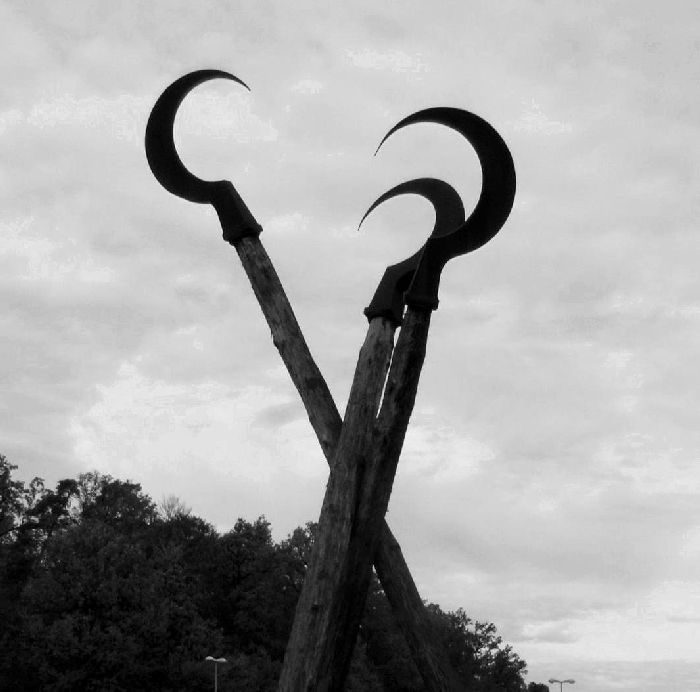  

|  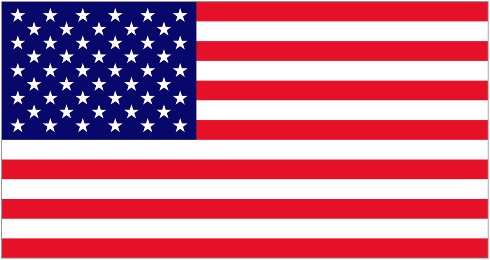 Hatlie, Mark R. (ongoing), "Sites of Memory: Historical Markers, Memorials, Monuments, and Cemeteries", website, Tübingen (Germany). Click here for home page. Hatlie, Mark R. (ongoing), "Sites of Memory: Historical Markers, Memorials, Monuments, and Cemeteries", website, Tübingen (Germany). Click here for home page.
|
  

|   Hatlie, Mark R. (ongoing), "Sites of Memory: Readings and Resources", website, Tübingen (Germany). Hot links to many websites about memory and monuments (including this one). Hatlie, Mark R. (ongoing), "Sites of Memory: Readings and Resources", website, Tübingen (Germany). Hot links to many websites about memory and monuments (including this one).
|


|   November 2000 - Synagogue Memorial, "Synagogenplatz," Gartenstrasse, Tübingen (Germany). At site of Tübingen's former synagogue. From the large metal box to the metal column on the street, there is a narrow channel for water to flow under metal plates bearing the names of victims and down this simple waterfall in the foreground. Commemorates not only the building and its destruction, but also all the Jews of Tübingen who were murdered in the Holocaust. The synagogue was burned down during the Reichskristallnacht of November 9, 1938. Tübingen Nazis threw the Torah rolls into the Neckar, arrested five Jews and sent them to Dachau, and set the synagogue ablaze. After the war, Tübingen courts sentenced three of those involved to prison terms of 20 to 32 months. Info & Image from Mark Hatlie. November 2000 - Synagogue Memorial, "Synagogenplatz," Gartenstrasse, Tübingen (Germany). At site of Tübingen's former synagogue. From the large metal box to the metal column on the street, there is a narrow channel for water to flow under metal plates bearing the names of victims and down this simple waterfall in the foreground. Commemorates not only the building and its destruction, but also all the Jews of Tübingen who were murdered in the Holocaust. The synagogue was burned down during the Reichskristallnacht of November 9, 1938. Tübingen Nazis threw the Torah rolls into the Neckar, arrested five Jews and sent them to Dachau, and set the synagogue ablaze. After the war, Tübingen courts sentenced three of those involved to prison terms of 20 to 32 months. Info & Image from Mark Hatlie. 
|
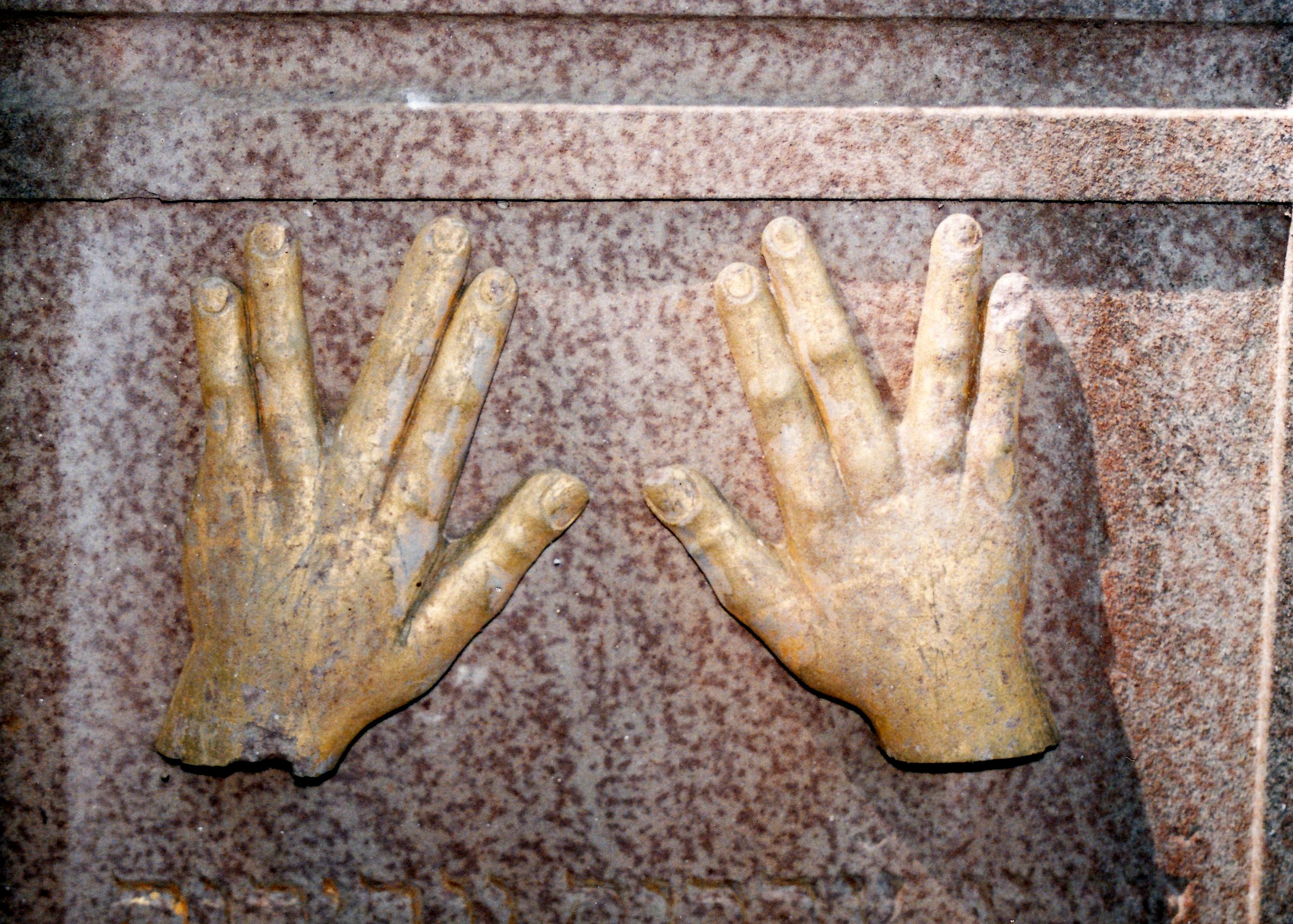
| 
 Date? - Segnende Hände der Kohanim auf einem Grabstein, Baisingen (Germany). "On Jewish tombstones you will sometimes see a symbol showing two hands arranged for the Priestly Blessing like the example here. This is a symbol of the Kohen or Cohen (Hebrew for priest). The plural form is Kohanim or Cohanim. Kohanim are assumed to be direct male descendants of Aaron, who was the first Kohen and the brother of Moses. Some Jewish surnames frequently associated with this symbol are Conn or Cohn (Kohn), Cahn (Kahn), and Cohen (Kohen), but you will find the symbol on the grave markers of people with other surnames."
Date? - Segnende Hände der Kohanim auf einem Grabstein, Baisingen (Germany). "On Jewish tombstones you will sometimes see a symbol showing two hands arranged for the Priestly Blessing like the example here. This is a symbol of the Kohen or Cohen (Hebrew for priest). The plural form is Kohanim or Cohanim. Kohanim are assumed to be direct male descendants of Aaron, who was the first Kohen and the brother of Moses. Some Jewish surnames frequently associated with this symbol are Conn or Cohn (Kohn), Cahn (Kahn), and Cohen (Kohen), but you will find the symbol on the grave markers of people with other surnames."
|
TUBINGEN to ULM (111 km)
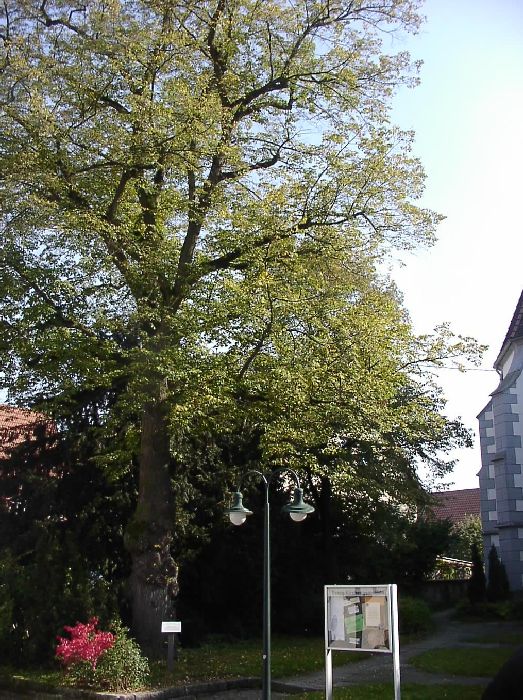


|   1871 - Friedenslinde / Peace Linden Tree, "Our Lady" Protestant Church, Town Square, Frickenhausen, near Stuttgart (Germany). Translation of plaque: "Nature Monument and Symbol of Peace / This linden tree is a protected natural monument. Primary purpose is securing and maintaining it as typical for the landscape. The top of the tree is of particular importance. / This linden tree was planted in 1871 in memory of the end of the war and peace with France. That is why it is called the 'Peace Linden.'" Photographer's commentary: "Perhaps I am too cynical, but I strongly suspect that the tree was originally a Siegeslinde / 'Victory Linden' and was only later, after WW-II, re-interpreted. But I am sending an e-mail to the local pastor. Maybe he can tell me more." Note: Many other linden trees were planted in Germany about this time to mark the end of the Franco-Prussian War (1870-1871). 1871 - Friedenslinde / Peace Linden Tree, "Our Lady" Protestant Church, Town Square, Frickenhausen, near Stuttgart (Germany). Translation of plaque: "Nature Monument and Symbol of Peace / This linden tree is a protected natural monument. Primary purpose is securing and maintaining it as typical for the landscape. The top of the tree is of particular importance. / This linden tree was planted in 1871 in memory of the end of the war and peace with France. That is why it is called the 'Peace Linden.'" Photographer's commentary: "Perhaps I am too cynical, but I strongly suspect that the tree was originally a Siegeslinde / 'Victory Linden' and was only later, after WW-II, re-interpreted. But I am sending an e-mail to the local pastor. Maybe he can tell me more." Note: Many other linden trees were planted in Germany about this time to mark the end of the Franco-Prussian War (1870-1871).
|
 
  --> -->
|   Date? - Ulm (Germany). Ulm is on the Donau / Danube River. See guide books. Date? - Ulm (Germany). Ulm is on the Donau / Danube River. See guide books. |
 |   November 19, 2005 - Memorial to Deserters, Lehrertal entrance, university botanical garden, Ulm (Germany). Creation of Hannah Stuetz Menzel. Memorializes men who deserted the Wehrmacht during World War II. (15,000 were executed.) Information courtesy of Mark Hatlie.
November 19, 2005 - Memorial to Deserters, Lehrertal entrance, university botanical garden, Ulm (Germany). Creation of Hannah Stuetz Menzel. Memorializes men who deserted the Wehrmacht during World War II. (15,000 were executed.) Information courtesy of Mark Hatlie. 
|

|   March 28, 2004 - Ulm (Germany). Ulmer PACE-Zaun für den Frieden / Ulm PACE Fence for Peace, Bauzaun/Münsterplatz-Neue Strasse / Cathedral Square-New Road, Ulm (Germany). "A permanent location at the Meeting House of Ulm in the Open Court "firmly united with nature." Thanks to the team of the Meeting House for the loving care and care there!" Related to the Internationale Ärzte für die Verhütung des Atomkrieges / International Physicians for Prevention of Nuclear War (IPPNW). March 28, 2004 - Ulm (Germany). Ulmer PACE-Zaun für den Frieden / Ulm PACE Fence for Peace, Bauzaun/Münsterplatz-Neue Strasse / Cathedral Square-New Road, Ulm (Germany). "A permanent location at the Meeting House of Ulm in the Open Court "firmly united with nature." Thanks to the team of the Meeting House for the loving care and care there!" Related to the Internationale Ärzte für die Verhütung des Atomkrieges / International Physicians for Prevention of Nuclear War (IPPNW).
|


| S
T
O
N
E |   1992 -
Memorial stone for Josef Ruf, next to the Maria Geburt / Mary's Birth Catholic Church, Hochberg, Bad Saulgau-Hochberg, Sigmaringen district (Germany). Placed by Pax Christi. Born in Hochberg (now part of the city of Bad Saulgau), Josef Ruf [1905-1940] was a religiously motivated conscientious objector executed by the Nazis. German inscription says, "Lived for peace, died by violence." 1992 -
Memorial stone for Josef Ruf, next to the Maria Geburt / Mary's Birth Catholic Church, Hochberg, Bad Saulgau-Hochberg, Sigmaringen district (Germany). Placed by Pax Christi. Born in Hochberg (now part of the city of Bad Saulgau), Josef Ruf [1905-1940] was a religiously motivated conscientious objector executed by the Nazis. German inscription says, "Lived for peace, died by violence." 
|
NURNBERG

|   - Nürnberg / Nuremberg, Bravaria (Germany). See guide books. On the Pegnitz river and the Rhine-Main-Danube Canal. Franconia's largest city. - Nürnberg / Nuremberg, Bravaria (Germany). See guide books. On the Pegnitz river and the Rhine-Main-Danube Canal. Franconia's largest city.
|

|   1945-46 - Justizpalast / Palace of Justice, Fürther Strasse 110, Nürnberg / Nuremberg, Bravaria (Germany). "Before 1945, the city of Nürnberg (Nuremberg) was most famous for producing a type of gingerbread called Nürnberger Lebkuchen; now the city is known the world over as the location of the proceedings before the International Military Tribunal where German war criminals were put on trial in the aftermath of World War II." 1945-46 - Justizpalast / Palace of Justice, Fürther Strasse 110, Nürnberg / Nuremberg, Bravaria (Germany). "Before 1945, the city of Nürnberg (Nuremberg) was most famous for producing a type of gingerbread called Nürnberger Lebkuchen; now the city is known the world over as the location of the proceedings before the International Military Tribunal where German war criminals were put on trial in the aftermath of World War II."

|

| C
A
N
A
L |   1992- Rhine–Main–Danube Canal (German: Rhein-Main-Donau-Kanal. Also called Main-Danube Canal, RMD Canal or Europa Canal), Bavaria (Germany). Connects the Main and the Danube rivers across the European Watershed, running from Bamberg via Nuremberg to Kelheim. The canal connects the North Sea and Atlantic Ocean to the Black Sea, providing a navigable artery between the Rhine delta (at Rotterdam in the Netherlands) and the Danube Delta in eastern Romania. The present canal was completed in 1992 and is 171 km (106 miles) long. 1992- Rhine–Main–Danube Canal (German: Rhein-Main-Donau-Kanal. Also called Main-Danube Canal, RMD Canal or Europa Canal), Bavaria (Germany). Connects the Main and the Danube rivers across the European Watershed, running from Bamberg via Nuremberg to Kelheim. The canal connects the North Sea and Atlantic Ocean to the Black Sea, providing a navigable artery between the Rhine delta (at Rotterdam in the Netherlands) and the Danube Delta in eastern Romania. The present canal was completed in 1992 and is 171 km (106 miles) long.
|



| S
T
R
E
E
T |   October 24, 1993 - Straße der Menschenrechte / Way of Human Rights, Germanisches Nationalmuseum /German National Museum, Nuremberg (Germany). "Sited on the street between the new and old buildings of the musuem, connecting Kornmarkt Street and the medieval city wall. Consists of a gate, 27 round pillars made of white concrete, two pillars buried in the ground showing only a round plate, and one columnar oak, for a total of 30 pillars. Engraved in each pillar is one article of the Universal Declaration of Human Rights. "Part of Nuremberg's efforts to shake off its Nazi-era reputation as the 'City of the Party Rallies' and reinvent itself as a 'City of Peace & Human Rights.'" "By Israeli sculptor Danny Karavan. See similar use of stone pillars by Karavan at Nitzana Settlement in the Negev Desert (Israel). October 24, 1993 - Straße der Menschenrechte / Way of Human Rights, Germanisches Nationalmuseum /German National Museum, Nuremberg (Germany). "Sited on the street between the new and old buildings of the musuem, connecting Kornmarkt Street and the medieval city wall. Consists of a gate, 27 round pillars made of white concrete, two pillars buried in the ground showing only a round plate, and one columnar oak, for a total of 30 pillars. Engraved in each pillar is one article of the Universal Declaration of Human Rights. "Part of Nuremberg's efforts to shake off its Nazi-era reputation as the 'City of the Party Rallies' and reinvent itself as a 'City of Peace & Human Rights.'" "By Israeli sculptor Danny Karavan. See similar use of stone pillars by Karavan at Nitzana Settlement in the Negev Desert (Israel). 
|
ULM to MUNICH (141 km)

|   Date? - Augsburg (Germany). See guide books. "College town & home of the Regierungsbezirk Schwaben and the Bezirk Schwaben. As of 2008, the 3rd largest city in Bavaria with a population >264,000. After Trier, Germany's second oldest city.
Only German city with its own legal holiday, the Peace of Augsburg [1555], celebrated on August 8 of every year. This gives Augsburg more legal holidays than any other region or city in Germany." Image shows Hercules Fountain & Church of St. Anna. Date? - Augsburg (Germany). See guide books. "College town & home of the Regierungsbezirk Schwaben and the Bezirk Schwaben. As of 2008, the 3rd largest city in Bavaria with a population >264,000. After Trier, Germany's second oldest city.
Only German city with its own legal holiday, the Peace of Augsburg [1555], celebrated on August 8 of every year. This gives Augsburg more legal holidays than any other region or city in Germany." Image shows Hercules Fountain & Church of St. Anna.
|



|   After 1871 - Friedensengel / Angel of Peace, on opposite side of Luitpoldbrücke over Isar River, Munich, Bavaria (Germany). "Rising above the terraces in the axis of the Prinzregentenstrasse is the 38-metre 'Angel of Peace,' which is the dominant feature of the park and is often regarded as a symbol of Munich. Created to mark the 25 years of peace after the 1871 Treaty of Versailles, it is mounted on a 23-metre column above a small hall, and is modelled on Athena, goddess of wisdom and peace, but also goddess of 'strategic' war, and she holds Nike in her hand, the goddess of victory. The Friedensengel provides a spectacular view of the city, and is sited above a superb terrace, which is unfortunately marred by heavy traffic." After 1871 - Friedensengel / Angel of Peace, on opposite side of Luitpoldbrücke over Isar River, Munich, Bavaria (Germany). "Rising above the terraces in the axis of the Prinzregentenstrasse is the 38-metre 'Angel of Peace,' which is the dominant feature of the park and is often regarded as a symbol of Munich. Created to mark the 25 years of peace after the 1871 Treaty of Versailles, it is mounted on a 23-metre column above a small hall, and is modelled on Athena, goddess of wisdom and peace, but also goddess of 'strategic' war, and she holds Nike in her hand, the goddess of victory. The Friedensengel provides a spectacular view of the city, and is sited above a superb terrace, which is unfortunately marred by heavy traffic."
|
 |   Date? - Temple of Peace?, Maximilian Park, Munich (Germany). What & where is this? Date? - Temple of Peace?, Maximilian Park, Munich (Germany). What & where is this?
|

|   2010 -
Jüdische Museum München / Jewish Museum Munich, St.-Jakobs-Platz 16, Munich (Germany)."On our three exhibition floors, visitors gain a world of insights into Jewish life and culture in Munich. A special section geared towards young as well as adult audiences provides in-depth information on Jewish history and religion. On each gallery floor there will be a study area." 2010 -
Jüdische Museum München / Jewish Museum Munich, St.-Jakobs-Platz 16, Munich (Germany)."On our three exhibition floors, visitors gain a world of insights into Jewish life and culture in Munich. A special section geared towards young as well as adult audiences provides in-depth information on Jewish history and religion. On each gallery floor there will be a study area."

|

|   Date? -
Viktualienmarkt, Munich (Germany). Open air food market. Near the Jewish Museum & Peterskirche. Date? -
Viktualienmarkt, Munich (Germany). Open air food market. Near the Jewish Museum & Peterskirche.
|

|   September 30, 1938 -
Führerbau, Munich (Germany). "Hitler's office was in the room just above the balcony. The Nazi eagle and swastika can be seen at top center." Also where the Munich Peace Agreement was signed by Neville Chamberlain, who proclaimed, "My good friends, for the second time in our history a British Prime Minister has returned from Germany bringing peace with honour. I believe it is peace for our time." Building is now a school, the Hochschule für Musik und Theater München. September 30, 1938 -
Führerbau, Munich (Germany). "Hitler's office was in the room just above the balcony. The Nazi eagle and swastika can be seen at top center." Also where the Munich Peace Agreement was signed by Neville Chamberlain, who proclaimed, "My good friends, for the second time in our history a British Prime Minister has returned from Germany bringing peace with honour. I believe it is peace for our time." Building is now a school, the Hochschule für Musik und Theater München.
 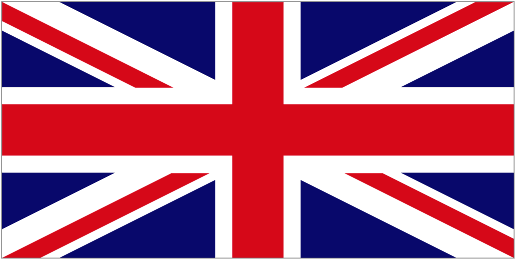
|
MUNICH to GARMISH-PARTENKIRCHEN (108 km)

|   Date? - Ettal (Germany). Ettal Abbey is famous for brewing beer. "During the winter of 1940-41, the German pastor and theologian Dietrich Bonhoeffer [1906-1945] spent some months at the monastery as the friend and guest of the Abbot. Like Bonhoeffer, a number of those in the Ettal community were involved in the conspiracy against Hitler. While at Ettal, Bonhoeffer also worked on his book Ethics. Catholic priest Rupert Mayer was kept at the Abbey from 1939 to 1945 by the Nazis to prevent him for [sic] further anti-Nazi preaching." Date? - Ettal (Germany). Ettal Abbey is famous for brewing beer. "During the winter of 1940-41, the German pastor and theologian Dietrich Bonhoeffer [1906-1945] spent some months at the monastery as the friend and guest of the Abbot. Like Bonhoeffer, a number of those in the Ettal community were involved in the conspiracy against Hitler. While at Ettal, Bonhoeffer also worked on his book Ethics. Catholic priest Rupert Mayer was kept at the Abbey from 1939 to 1945 by the Nazis to prevent him for [sic] further anti-Nazi preaching." 
|

|   Date? - Scloss Linderof / Linderof Palace (Germany). Smallest of the three palaces built by King Ludwig II of Bavaria and the only one of which he lived to see completion. Name of restaurant in Farragut, TN. Date? - Scloss Linderof / Linderof Palace (Germany). Smallest of the three palaces built by King Ludwig II of Bavaria and the only one of which he lived to see completion. Name of restaurant in Farragut, TN.
|

|   Date? - Garmish-Partenkirchen (Germanry). "Already a popular German ski resort area, the growing city became a U.S. military garrison in 1945. Since then it's evolved into the US Army Garrison Garmisch (USAG) and currently shares the kaserne with the Bundeswehr's Gebirgsmusikkorps of the First Mountain Division." Date? - Garmish-Partenkirchen (Germanry). "Already a popular German ski resort area, the growing city became a U.S. military garrison in 1945. Since then it's evolved into the US Army Garrison Garmisch (USAG) and currently shares the kaserne with the Bundeswehr's Gebirgsmusikkorps of the First Mountain Division." |
GARMISH-PARTENKIRCHEN to INNSBRUCK (61 km)

| 
 Date? - Mittenwald (Germany). Said to be the most beautful town in Germany. "Connected with the violin. There is a violin-making museum near the centre and Mathias Klotz, the founder of the industry, is commemorated by a statue next to the church. Also a town built on trade, straddling the old commercial route from Germany via the Seefeld plateau south into Italy. Its medieval prosperity, like so many other towns, was founded on the granting of a market charter." Date? - Mittenwald (Germany). Said to be the most beautful town in Germany. "Connected with the violin. There is a violin-making museum near the centre and Mathias Klotz, the founder of the industry, is commemorated by a statue next to the church. Also a town built on trade, straddling the old commercial route from Germany via the Seefeld plateau south into Italy. Its medieval prosperity, like so many other towns, was founded on the granting of a market charter."
|

| 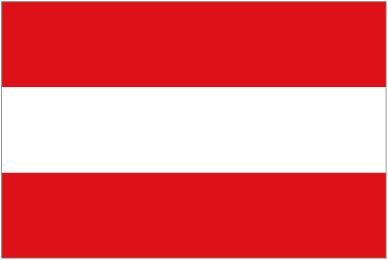 Date? - Innsbruck (Austria). See guide books. Date? - Innsbruck (Austria). See guide books. |


|  Date? - Institut für Politikwissenschaft / Institute for Political Science
Universität Innsbruck / University of Innsbruck,
Universitätsstrasse 15, A-6020 Innsbruck (Austria).
Dr. Laurie R. Cohen, Tel.: +43 (0) 512 507 - 7072,
Fax: +43 (0) 512 507 - 2849,
Raum: w 2.20,
laurie.cohen@uibk.ac.at Date? - Institut für Politikwissenschaft / Institute for Political Science
Universität Innsbruck / University of Innsbruck,
Universitätsstrasse 15, A-6020 Innsbruck (Austria).
Dr. Laurie R. Cohen, Tel.: +43 (0) 512 507 - 7072,
Fax: +43 (0) 512 507 - 2849,
Raum: w 2.20,
laurie.cohen@uibk.ac.at
|

|  Date? - Grassmayr Bell Museum & Sound Room (Glockenmuseum und Klangraum), 53 Leopoldstrasse, Innsbruck (Austria). Grassmayr bell works in Innsbruck since 1599. Located at the south end of central Innsbruck, a tram ride or walk from the old town. The foundry tour (by appointment) and the small museum are free of charge, open during business hours from 9 to 5 Monday to Friday. NEED TO RESERVE
IN ADVANCE. Date? - Grassmayr Bell Museum & Sound Room (Glockenmuseum und Klangraum), 53 Leopoldstrasse, Innsbruck (Austria). Grassmayr bell works in Innsbruck since 1599. Located at the south end of central Innsbruck, a tram ride or walk from the old town. The foundry tour (by appointment) and the small museum are free of charge, open during business hours from 9 to 5 Monday to Friday. NEED TO RESERVE
IN ADVANCE.
|
INNSBRUCK to NASSEREITH (52 km)

|  Date? - Nassereith (Austria). "Main sources of income is tourism but Nassereith is now community for commuters with 2084 inhabitants." Turn north here back toward Bravaria. Date? - Nassereith (Austria). "Main sources of income is tourism but Nassereith is now community for commuters with 2084 inhabitants." Turn north here back toward Bravaria.
|
NASSEREITH to LINDAU (155 km via Fussen & Isny)

|   Date? - Zugspitze, Grainau (Germany). Highest mountain in Germany, at 2,962 metres above sea level. There is a cog railway (Zugspitzbahn) leading from Garmisch-Partenkirchen all the way to the peak. There are also two cable cars that go to the peak from the base of the mountain: One ascends from the German side of the mountain at the lake Eibsee (Eibsee Cable Car), and the other ascends from Austria near Ehrwald (Tyrolean Zugspitze Cable Car). The peak is regularly crowded with tourists. Date? - Zugspitze, Grainau (Germany). Highest mountain in Germany, at 2,962 metres above sea level. There is a cog railway (Zugspitzbahn) leading from Garmisch-Partenkirchen all the way to the peak. There are also two cable cars that go to the peak from the base of the mountain: One ascends from the German side of the mountain at the lake Eibsee (Eibsee Cable Car), and the other ascends from Austria near Ehrwald (Tyrolean Zugspitze Cable Car). The peak is regularly crowded with tourists.
|



|   Date? - South of Kempten im Allgäu, Allgäu, Bravaria (Germany). Home of Drs. Jutta and Horst (Bill) Lehmann, Martinstreet. 87544 Blaichach, telefon (0049) O8321/88118, email samoa60@yahoo.de. Image shows the Alpenglow viewed from Allgäuer Berghof in Blaichach. Date? - South of Kempten im Allgäu, Allgäu, Bravaria (Germany). Home of Drs. Jutta and Horst (Bill) Lehmann, Martinstreet. 87544 Blaichach, telefon (0049) O8321/88118, email samoa60@yahoo.de. Image shows the Alpenglow viewed from Allgäuer Berghof in Blaichach.
|
  

| P
L
A
Q
U
E |   August 1987 - A plaque for Michael Lerpscher, at the catholic church, Missen-Wilhams, Sonthofen district, Bravaria (Germany). This is the home community of Michael Lerpscher [1905-1940] who was a religiously motivated conscientious objector executed by the Nazis. Inscribed in German: "Laienbrüder der Christkönigsgesellschaft - Märtyrer für den Frieden Christi [Pax Christi]." August 1987 - A plaque for Michael Lerpscher, at the catholic church, Missen-Wilhams, Sonthofen district, Bravaria (Germany). This is the home community of Michael Lerpscher [1905-1940] who was a religiously motivated conscientious objector executed by the Nazis. Inscribed in German: "Laienbrüder der Christkönigsgesellschaft - Märtyrer für den Frieden Christi [Pax Christi]." 
|



|   November 14, 1990 - Friedenszeichen / Peace Monument, Lake Konstance (Bodensee), Lindau, Bravaria (Germany). According to Peter van den Dungen, "Very near to where the Friedensmuseum Lindau (Friedens Raeume / Peace Rooms) is located. Sculpted by Dietrich Foerster, the winner of a competition organised by the Akademie der Bildenden Kuenste in Munich. A bronze plaque explains that it was unveiled on the 50th anniversary of the bombing of Coventry cathedral, and concludes with "Dona Nobis Pacem." November 14, 1990 - Friedenszeichen / Peace Monument, Lake Konstance (Bodensee), Lindau, Bravaria (Germany). According to Peter van den Dungen, "Very near to where the Friedensmuseum Lindau (Friedens Raeume / Peace Rooms) is located. Sculpted by Dietrich Foerster, the winner of a competition organised by the Akademie der Bildenden Kuenste in Munich. A bronze plaque explains that it was unveiled on the 50th anniversary of the bombing of Coventry cathedral, and concludes with "Dona Nobis Pacem." 
|



| M
U
SE
U
M |   1980 - Friedens-Raeume, Lindenhofweg 25, Lindau/Bodensee (Germany). Former Friedensmuseum Lindau / Landau Peace Museum. Operated by Pax Christi, Diocese of Augsburg. On Lake Constance. "Once I was invited to
give a talk for the annual summer opening of the Lindau Peace Museum (when
my good friend, Thomas Wechs, was director; I have not seen the
Friedensraeume in the same building which has replaced the original museum,
in 2000 or thereabouts). At that time also, the Zeppelin museum opened, and
I was lucky to attend." Affiliated with International Network of Museums for Peace (INMP). 1980 - Friedens-Raeume, Lindenhofweg 25, Lindau/Bodensee (Germany). Former Friedensmuseum Lindau / Landau Peace Museum. Operated by Pax Christi, Diocese of Augsburg. On Lake Constance. "Once I was invited to
give a talk for the annual summer opening of the Lindau Peace Museum (when
my good friend, Thomas Wechs, was director; I have not seen the
Friedensraeume in the same building which has replaced the original museum,
in 2000 or thereabouts). At that time also, the Zeppelin museum opened, and
I was lucky to attend." Affiliated with International Network of Museums for Peace (INMP).
|
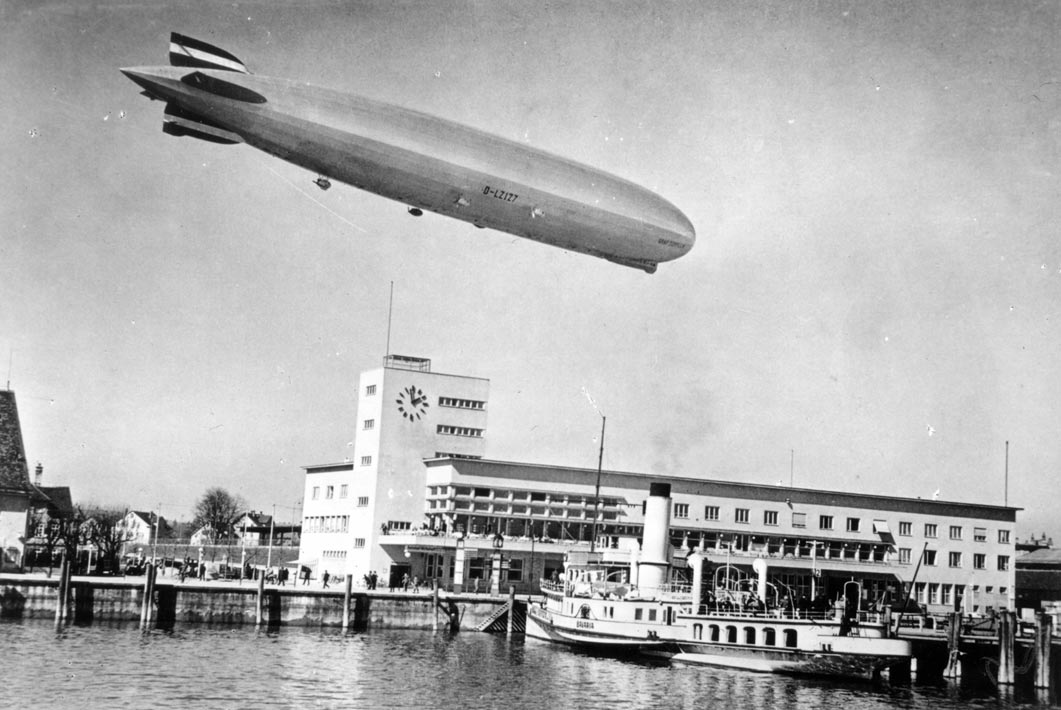
| M
U
SE
U
M |   c2000 - Zeppelin Museum Friedrichshafen, Friedrichshafen (Germany). "You should consider making a diversion to Friedrichshafen and visit the
Zeppelin museum. Nothing to do with peace, but this is where the originals
were built, and today they are in the same business." c2000 - Zeppelin Museum Friedrichshafen, Friedrichshafen (Germany). "You should consider making a diversion to Friedrichshafen and visit the
Zeppelin museum. Nothing to do with peace, but this is where the originals
were built, and today they are in the same business."
|
LINDAU to ZURICH (170 km)

| 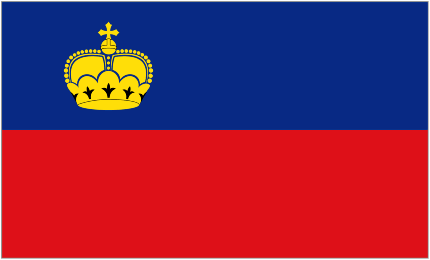 Date? - Vaduz (Liechtenstein). See guide books.
"Smallest German-speaking country in the world and the only alpine country to lie entirely within the Alps. It is also the only German-speaking country not to share a common border with Germany." Date? - Vaduz (Liechtenstein). See guide books.
"Smallest German-speaking country in the world and the only alpine country to lie entirely within the Alps. It is also the only German-speaking country not to share a common border with Germany."
|
 | 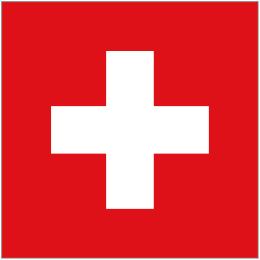 Date? - Henri Dunant Museum, Asylstrasse 2, Heiden (Switzerland). The museum is in the nursing home where he lived from 1892 until his death in 1910. "A special room is devoted to his vision of a world without war and social need." "Heiden: good to visit this, in this anniversary year. I saw the Dunant room many years ago, and have not seen the expanded and renovated rooms dedicated
to him since." Date? - Henri Dunant Museum, Asylstrasse 2, Heiden (Switzerland). The museum is in the nursing home where he lived from 1892 until his death in 1910. "A special room is devoted to his vision of a world without war and social need." "Heiden: good to visit this, in this anniversary year. I saw the Dunant room many years ago, and have not seen the expanded and renovated rooms dedicated
to him since." 
|

|  Date? - Zurich (Switzerland). See guide books. Date? - Zurich (Switzerland). See guide books.
|

|  1910 - Grave of Henry Dunant, Friedhof Zürich-Sihlfeld (Switzerland). Henry Dunant [1828-1910] founded the Red Cross in June 1859 and received the first Nobel Peace Prize in 1901. 1910 - Grave of Henry Dunant, Friedhof Zürich-Sihlfeld (Switzerland). Henry Dunant [1828-1910] founded the Red Cross in June 1859 and received the first Nobel Peace Prize in 1901. 
|

|  October 3, 2008 - Friedens-Ei / Peace Egg, Grossmünster place, Zurich (Switzerland). Made by Peace Brigades International (PBI). "The 2.5 meters wide and 80 kilo anniversary egg was at the University of Berne under the direction of Dr. Stefan Stankowski, professor of physics and director Fachschaftssitzung physics, science and research and Giorgio Insom, Researcher, University of Applied Sciences Berne planned and assembled. The interplay between technology and peace is unique and illustrates the fragility and vulnerability of human rights." October 3, 2008 - Friedens-Ei / Peace Egg, Grossmünster place, Zurich (Switzerland). Made by Peace Brigades International (PBI). "The 2.5 meters wide and 80 kilo anniversary egg was at the University of Berne under the direction of Dr. Stefan Stankowski, professor of physics and director Fachschaftssitzung physics, science and research and Giorgio Insom, Researcher, University of Applied Sciences Berne planned and assembled. The interplay between technology and peace is unique and illustrates the fragility and vulnerability of human rights."
|
ZURICH to LUZERN (51 km)

|  Date? - Luzern / Lucerne (Switzerland). See guide books. "Luzern! Wonderful. One of my favourite cities (even if Bloch's museum had not been there)." Image shows the Kapellbruecke / Chapel Bridge and Wasserturm. Date? - Luzern / Lucerne (Switzerland). See guide books. "Luzern! Wonderful. One of my favourite cities (even if Bloch's museum had not been there)." Image shows the Kapellbruecke / Chapel Bridge and Wasserturm.
|



|  1881 -
Bourbaki Panorama, Löwenplatz 11, Postfach,
Luzern / Lucerne (Switzerland). "Huge circular painting by Edouard Castres... At once a stirring denouncement of war, and a moving testimonial to man`s capacity for humanitarian actions." "Worth seeing, and you could even consider it as a peace monument of some sort. It is a
humanitarian episode during the Franco-Prussian war. It is impressive." [Per PvdD] 1881 -
Bourbaki Panorama, Löwenplatz 11, Postfach,
Luzern / Lucerne (Switzerland). "Huge circular painting by Edouard Castres... At once a stirring denouncement of war, and a moving testimonial to man`s capacity for humanitarian actions." "Worth seeing, and you could even consider it as a peace monument of some sort. It is a
humanitarian episode during the Franco-Prussian war. It is impressive." [Per PvdD]
|



|  June 7, 1902 - International Museum of War & Peace, Lucerne (Switzerland). Opened in Shooting Festival Hall by Ivan Bloch, aka Jean de Bloch [1836-1902], a Polish-Russian entrepreneur and author of the 6-volume master work, La Guerre Future / Is War Now Impossible? (1898).
Moved to Museggstrasse in 1910. Closed in 1920 due to lack of patronage during World War I. Site is now Culture & Congress Centre by French architect Jean Nouvel (1998). See "The International Museum of War and Peace at Lucerne" by Peter van den Dungen, Schweizerische Zeitschrift fur Geschichte, vol, 31, pp, 185-202 (1981). June 7, 1902 - International Museum of War & Peace, Lucerne (Switzerland). Opened in Shooting Festival Hall by Ivan Bloch, aka Jean de Bloch [1836-1902], a Polish-Russian entrepreneur and author of the 6-volume master work, La Guerre Future / Is War Now Impossible? (1898).
Moved to Museggstrasse in 1910. Closed in 1920 due to lack of patronage during World War I. Site is now Culture & Congress Centre by French architect Jean Nouvel (1998). See "The International Museum of War and Peace at Lucerne" by Peter van den Dungen, Schweizerische Zeitschrift fur Geschichte, vol, 31, pp, 185-202 (1981).
|

|  1911 - Hotel de la Paix, Luzern / Lucerne (Switzerland). "The [39-room] hotel is located in the heart of Lucerne, near the lion monument, at the entrance of the old quarter and 200 metres from the famous Vierwaldstätter lake." "You might consider staying [here]. This will be 100
years old next year, and was named because of the new Bloch peace museum
that opened in 1910, almost next to it. This is where I have stayed a couple
of times, also recently. The Bourbaki Panorama is opposite the hotel." [Per PvdD] 1911 - Hotel de la Paix, Luzern / Lucerne (Switzerland). "The [39-room] hotel is located in the heart of Lucerne, near the lion monument, at the entrance of the old quarter and 200 metres from the famous Vierwaldstätter lake." "You might consider staying [here]. This will be 100
years old next year, and was named because of the new Bloch peace museum
that opened in 1910, almost next to it. This is where I have stayed a couple
of times, also recently. The Bourbaki Panorama is opposite the hotel." [Per PvdD]
|

|  Date? - Rosengart Museum, Luzern / Lucerne (Switzerland). "Several Picassos and much else. Also worth visiting." Date? - Rosengart Museum, Luzern / Lucerne (Switzerland). "Several Picassos and much else. Also worth visiting."
|

|  Date? - Verkehrshaus der Schweiz / Transportation Museum, Luzern (Switzerland)..
"Livesize monstrous engines of all kind are on display. Trains, Ships and Airplanes." "At the side of it, and part of it, is a museum
dedicated to the art work of Hans Erni. Both are well worth a visit.
I may have mentioned him before. He was 100 years old last year, and we saw
a wonderful exhibition in Lucerne last year. When I was in the city the
other day, I visited for the first time his museum. Because much of his work
is about peace, this could also be seen as partly a peace art museum." Date? - Verkehrshaus der Schweiz / Transportation Museum, Luzern (Switzerland)..
"Livesize monstrous engines of all kind are on display. Trains, Ships and Airplanes." "At the side of it, and part of it, is a museum
dedicated to the art work of Hans Erni. Both are well worth a visit.
I may have mentioned him before. He was 100 years old last year, and we saw
a wonderful exhibition in Lucerne last year. When I was in the city the
other day, I visited for the first time his museum. Because much of his work
is about peace, this could also be seen as partly a peace art museum."
|

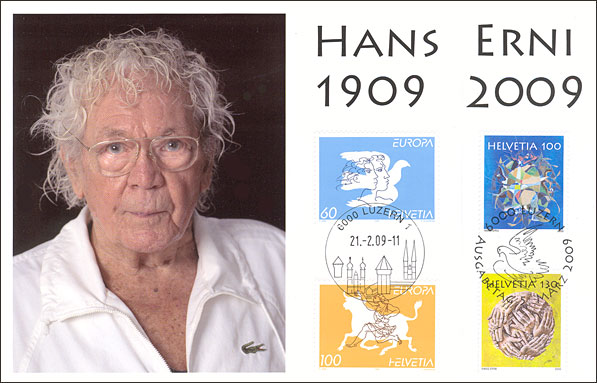

|



|  June 6, 2009 - Peace Fresco, Entrance, Palais des Nations, Geneva (Switzerland). By Hans Erni. "His signature dove, the symbol of peace, is a recurring theme on the fresco. "I want all those people going in there to work every day to see it and think about peace," he told a group of foreign journalists who recently visited him in his home city of Lucerne. "I want them to be inspired." (PvdD: "We saw sketches last year and liked them a lot.") June 6, 2009 - Peace Fresco, Entrance, Palais des Nations, Geneva (Switzerland). By Hans Erni. "His signature dove, the symbol of peace, is a recurring theme on the fresco. "I want all those people going in there to work every day to see it and think about peace," he told a group of foreign journalists who recently visited him in his home city of Lucerne. "I want them to be inspired." (PvdD: "We saw sketches last year and liked them a lot.")
|

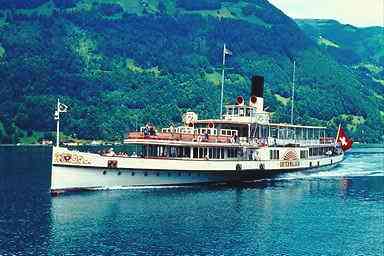

|  Date? - Vierwaldstättersee / Lake Lucerne, Luzern / Lucerne (Switzerland).
"The best and most pleasant way [to get to Hertenstein] is to go by boat
from Lucerne and get off at this stop (the second one, after Verkehrshaus;
it takes perhaps 15 minutes). In Lucerne you take the boat opposite the
railway station, and imposing KKL (where once stood the castle-like building
where Bloch's museum opened in 1902. I am making efforts to have a bust of
Bloch inside this building - now one of the world's top concert halls)." Date? - Vierwaldstättersee / Lake Lucerne, Luzern / Lucerne (Switzerland).
"The best and most pleasant way [to get to Hertenstein] is to go by boat
from Lucerne and get off at this stop (the second one, after Verkehrshaus;
it takes perhaps 15 minutes). In Lucerne you take the boat opposite the
railway station, and imposing KKL (where once stood the castle-like building
where Bloch's museum opened in 1902. I am making efforts to have a bust of
Bloch inside this building - now one of the world's top concert halls)."
|



|  October 2, 1976 - "Europa-Union" plaque, near boat landing, Hertenstein on Lake Lucerne near Weggis (Switzerland). Final paragraph (in German): "May every visitor to Herteinstein dedicate himself to the idea of a united Europe." Partly hidden by bushes. Erected on 30th anniversry of the 1946 European federalist conference. The idea of a Union of European Federalists, and also the concept for a Swiss "Europapolitik" (the Herteinstein Programme) were born at the historic conference. Information from Prof. Peter van den Dungen 07Aug09. "Just outside the city, perhaps you will want to have a look at the
Hertenstein memorial stone. As you already know, it is nothing special, but
going there will be fun." October 2, 1976 - "Europa-Union" plaque, near boat landing, Hertenstein on Lake Lucerne near Weggis (Switzerland). Final paragraph (in German): "May every visitor to Herteinstein dedicate himself to the idea of a united Europe." Partly hidden by bushes. Erected on 30th anniversry of the 1946 European federalist conference. The idea of a Union of European Federalists, and also the concept for a Swiss "Europapolitik" (the Herteinstein Programme) were born at the historic conference. Information from Prof. Peter van den Dungen 07Aug09. "Just outside the city, perhaps you will want to have a look at the
Hertenstein memorial stone. As you already know, it is nothing special, but
going there will be fun." 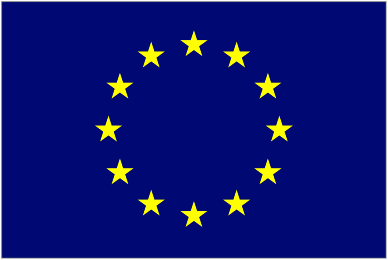
|



|  Date? - Pilatus Mountain, Luzern (Switzerland).
"Top can be reached with the Pilatus Railway, the world’s steepest cogwheel railway from Alpnachstad, operating from May to November (depending on snow conditions), and the whole year with the aerial panorama gondolas and aerial cableways from Kriens. Pilatus has the longest summer toboggan track in Switzerland (0.88 miles or 1,350 m) and the biggest suspension rope park in Central Switzerland. During the summer, the "Golden Round Trip" - a popular route for tourists - involves taking a boat from Lucerne across Lake Lucerne to Alpnachstad, going up on the cogwheel railway, coming down on the aerial cableways and panorama gondolas, and taking a bus back to Lucerne." Date? - Pilatus Mountain, Luzern (Switzerland).
"Top can be reached with the Pilatus Railway, the world’s steepest cogwheel railway from Alpnachstad, operating from May to November (depending on snow conditions), and the whole year with the aerial panorama gondolas and aerial cableways from Kriens. Pilatus has the longest summer toboggan track in Switzerland (0.88 miles or 1,350 m) and the biggest suspension rope park in Central Switzerland. During the summer, the "Golden Round Trip" - a popular route for tourists - involves taking a boat from Lucerne across Lake Lucerne to Alpnachstad, going up on the cogwheel railway, coming down on the aerial cableways and panorama gondolas, and taking a bus back to Lucerne."
|
LUZERN to BASEL (97 km)

|  Date? - Basel (Switerland). See guide books. Date? - Basel (Switerland). See guide books.
|

|  1536? - Tomb of Erasmus, Basler Münster / Basel Minster, Münsterplatz, Basel (Switzerland). Desiderius Erasmus [1466/1469-1536] was a Dutch Renaissance humanist. "He spent several years in Basel and died here in 1536. Although he stayed a Roman Catholic, he was buried in the Minster that was by then the main church of the Protestants in Basel. His bones were lost following changes to the church during the 19th century. They were only positively re-identified in 1974 and now rest under his epitaph."
Information courtesy of Gerard Lössbroek. 1536? - Tomb of Erasmus, Basler Münster / Basel Minster, Münsterplatz, Basel (Switzerland). Desiderius Erasmus [1466/1469-1536] was a Dutch Renaissance humanist. "He spent several years in Basel and died here in 1536. Although he stayed a Roman Catholic, he was buried in the Minster that was by then the main church of the Protestants in Basel. His bones were lost following changes to the church during the 19th century. They were only positively re-identified in 1974 and now rest under his epitaph."
Information courtesy of Gerard Lössbroek.
|
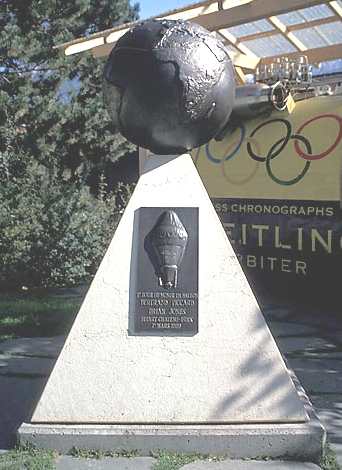
 |
 After 1999 - Globe atop Breitling Orbiter Monument, Arleshiem, Canton of Basel (Switzerland). "Breitling Orbiter was the name of three different Rozière balloons made by Cameron Balloons to circumnavigate the globe. The first two balloons never made it, while the third was successful in 1999." The Orbiter is in the Smithsonian Institution, Washington, DC (USA). After 1999 - Globe atop Breitling Orbiter Monument, Arleshiem, Canton of Basel (Switzerland). "Breitling Orbiter was the name of three different Rozière balloons made by Cameron Balloons to circumnavigate the globe. The first two balloons never made it, while the third was successful in 1999." The Orbiter is in the Smithsonian Institution, Washington, DC (USA). 
|
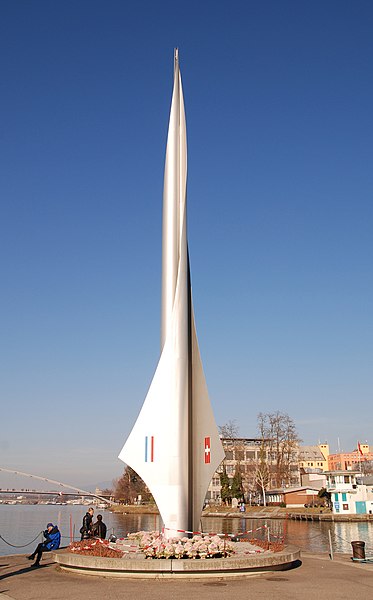 |
 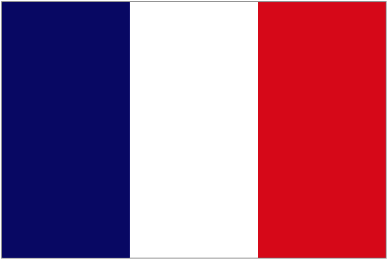  - Dreilandeeck / Tripoint, Rhine River, Basel (Switzerland). Point common to three countries (Switzerland, France & Germany). - Dreilandeeck / Tripoint, Rhine River, Basel (Switzerland). Point common to three countries (Switzerland, France & Germany).
|
BASEL to MULHOUSE (46 im)
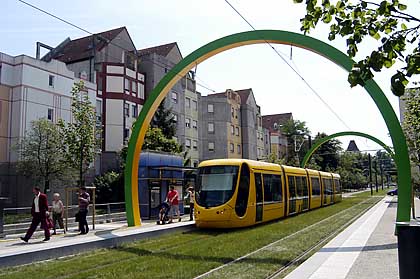
|  Date? - Mulhouse, Département de Haut-Rhin, Alsace (France). See guide books. "Nicknamed "the French Manchester" Mulhouse is famous for its museums, especially the Cité de l’Automobile (also known as "Musée national de l’automobile") and the Musée Français du Chemin de Fer (also known as "Cité du train"), respectively the largest automobile and railway museums in France." Date? - Mulhouse, Département de Haut-Rhin, Alsace (France). See guide books. "Nicknamed "the French Manchester" Mulhouse is famous for its museums, especially the Cité de l’Automobile (also known as "Musée national de l’automobile") and the Musée Français du Chemin de Fer (also known as "Cité du train"), respectively the largest automobile and railway museums in France."
|
MULHOUSE to COLMAR (46 km)

|  Date? - Colmar, Département de Haut-Rhin, Alsace (France). See guide books. Date? - Colmar, Département de Haut-Rhin, Alsace (France). See guide books.
|

|  Date? - Judensau / Jew Pig (représentation de juif) ornant la façade occidentale de la cathédrale de Colmar, Haut-Rhin, Alsace (France). "Testament to the troubled history of Jews in Alsace, is the presence of two Judensäue, one in the shape of a gargoyle, the other as a corner sculpture of a portal" of Saint-Martin Church (same as the cathedral?). Date? - Judensau / Jew Pig (représentation de juif) ornant la façade occidentale de la cathédrale de Colmar, Haut-Rhin, Alsace (France). "Testament to the troubled history of Jews in Alsace, is the presence of two Judensäue, one in the shape of a gargoyle, the other as a corner sculpture of a portal" of Saint-Martin Church (same as the cathedral?).
|
COLMAR to STRASBOURG (74 km)

|  1981 - Musée Albert Schweitzer / Albert Schweitzer Museum, 126, rue du Général de Gaulle, Kaysersberg, Alsace (France). "Ce lieu présente l'œuvre hospitalière du docteur à Lambaréné (Gabon) de 1913 à nos jours. " Next door to Schweitzer's birthplace. Albert Schweitzer [1875-1965] received the Nobel Peace Prize in 1952. 1981 - Musée Albert Schweitzer / Albert Schweitzer Museum, 126, rue du Général de Gaulle, Kaysersberg, Alsace (France). "Ce lieu présente l'œuvre hospitalière du docteur à Lambaréné (Gabon) de 1913 à nos jours. " Next door to Schweitzer's birthplace. Albert Schweitzer [1875-1965] received the Nobel Peace Prize in 1952.
|
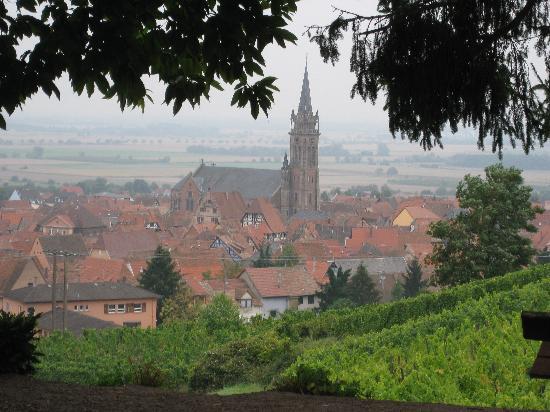
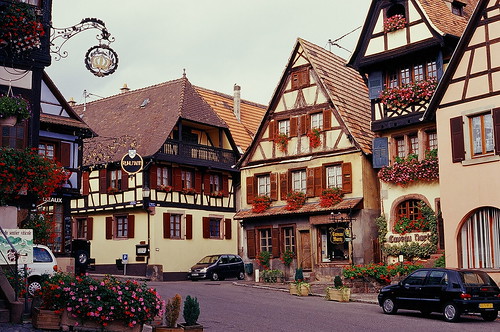



|  Date? - Dambach-la-Ville, Bas-Rhin, Alsace (France). "If you can, you should stop by Dambach-la-ville and go downtown to the Nartz winery and B&B (right image) at 12, place du Marché. (Cousin Gabby Nartz & ___ share the same great-grandfather.) Another winery in the same town is Petterman [9, rue de Dieffenthal]. (His grandmother and ___'s grandfather were brother and sister.) It's a beautiful little town, and from the looks of your itinerary, you will be very close." Date? - Dambach-la-Ville, Bas-Rhin, Alsace (France). "If you can, you should stop by Dambach-la-ville and go downtown to the Nartz winery and B&B (right image) at 12, place du Marché. (Cousin Gabby Nartz & ___ share the same great-grandfather.) Another winery in the same town is Petterman [9, rue de Dieffenthal]. (His grandmother and ___'s grandfather were brother and sister.) It's a beautiful little town, and from the looks of your itinerary, you will be very close."
|





|  Date? - Dambach-la-Ville, Bas-Rhin, Alsace (France).
"Head out the Val-de-ville Road (from Chatenois) and look for the medieval castle ruins on the hill -- this is where we had our photo (left image) taken, and where _���___'s great grandfather had stood almost 100 years earlier (middle image)!
Check out Chapelle Saint-Sébastien just outside Dambach (west side). It boasts a rather interesting ossuary, which completely freaked out my kids! ____'s dad always loved the Bras de lumière on the walls inside the chapel -- unique to say the least." Date? - Dambach-la-Ville, Bas-Rhin, Alsace (France).
"Head out the Val-de-ville Road (from Chatenois) and look for the medieval castle ruins on the hill -- this is where we had our photo (left image) taken, and where _���___'s great grandfather had stood almost 100 years earlier (middle image)!
Check out Chapelle Saint-Sébastien just outside Dambach (west side). It boasts a rather interesting ossuary, which completely freaked out my kids! ____'s dad always loved the Bras de lumière on the walls inside the chapel -- unique to say the least."
|

|  June 27, 1965 - Musee du KL-Natzweiler, Center on Resistance & Deportation, Natzweiler-Struthof, Alsace (France). "Lieu de mémoire et de recueillement, le site de l'ancien camp de Natzweiler est le témoin inscrit dans le paysage vosgien des faits qui se sont déroulés, il y a plus de soixante ans, au coeur de l'Europe." June 27, 1965 - Musee du KL-Natzweiler, Center on Resistance & Deportation, Natzweiler-Struthof, Alsace (France). "Lieu de mémoire et de recueillement, le site de l'ancien camp de Natzweiler est le témoin inscrit dans le paysage vosgien des faits qui se sont déroulés, il y a plus de soixante ans, au coeur de l'Europe." 

|  1995 - European Court of Human Rights / Cour européenne des droits de l’homme, Strasbourg (France). 1995 - European Court of Human Rights / Cour européenne des droits de l’homme, Strasbourg (France). 
|

|  1999 - European Parliament, Immeuble Louise Weiss, Quartier Européen / European Quarter, Strasbourg (France). "Parliament has two meeting places, namely the Louise Weiss building in Strasbourg, France, which serves for twelve four-day plenary sessions per year and is the official seat, and the Espace Léopold (Dutch: Leopoldruimte) complex in Brussels, Belgium, the larger of the two, which serves for committee meetings, political groups and complementary plenary sessions." 1999 - European Parliament, Immeuble Louise Weiss, Quartier Européen / European Quarter, Strasbourg (France). "Parliament has two meeting places, namely the Louise Weiss building in Strasbourg, France, which serves for twelve four-day plenary sessions per year and is the official seat, and the Espace Léopold (Dutch: Leopoldruimte) complex in Brussels, Belgium, the larger of the two, which serves for committee meetings, political groups and complementary plenary sessions." 
| 
|   1953 - Bridge of Europe, across Rhine River between Strasbourg (France) & Kehl (Germany). "Permanent artistic installation, a bond between two countries for which the border formerly seemed & wanted to be insuperable. According to Roland Ries, then mayor of Strasbourg, 'Here, it is indeed Europe, because this bridge connects two countries that have been torn apart for a long time; the reconciliation of these two countries is today one of the surest supports of the European construction.'" 1953 - Bridge of Europe, across Rhine River between Strasbourg (France) & Kehl (Germany). "Permanent artistic installation, a bond between two countries for which the border formerly seemed & wanted to be insuperable. According to Roland Ries, then mayor of Strasbourg, 'Here, it is indeed Europe, because this bridge connects two countries that have been torn apart for a long time; the reconciliation of these two countries is today one of the surest supports of the European construction.'"
|

|   Date? - Freiheit Männlich-Weiblich / Male-Female Freedom Statue, Platz der Verfassungsfreunde, Offenburg, near Rammersweier, Baden-Württemberg (Germany). Die 20 m hohe Aluminiumskulptur des amerikanischen Künstlers Jonathan Borofsky. "Commemorates the role Offenburg played in the democratic development of Germany. Composed of two intersecting 65 foot tall silhouettes (1 male and 1 female), each 'drawn' in 10 inch diameter aluminum pipe. As the viewer walks around the sculpture, the image changes from male to female and back again, and of course, one of the most interesting aspects of this sculpture is that you can see and walk right through it." Date? - Freiheit Männlich-Weiblich / Male-Female Freedom Statue, Platz der Verfassungsfreunde, Offenburg, near Rammersweier, Baden-Württemberg (Germany). Die 20 m hohe Aluminiumskulptur des amerikanischen Künstlers Jonathan Borofsky. "Commemorates the role Offenburg played in the democratic development of Germany. Composed of two intersecting 65 foot tall silhouettes (1 male and 1 female), each 'drawn' in 10 inch diameter aluminum pipe. As the viewer walks around the sculpture, the image changes from male to female and back again, and of course, one of the most interesting aspects of this sculpture is that you can see and walk right through it."
|


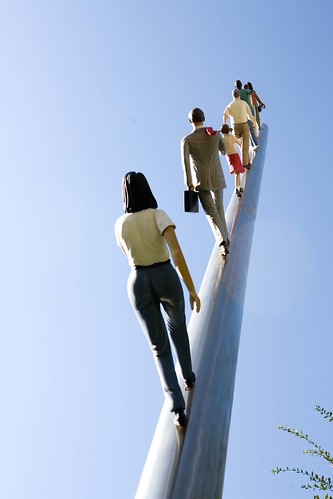


|  1992-2008 - "Walking to the Sky." (#1) 1992 "Man Walking to the Sky," Kassel (Germany). (#2) "Woman Waking to the Sky," Strasbourg (France). (#3) 2004 "Humanity Walking to the Sky," moved from Rockefeller Center, New York City, & Nasher Collection, Dallas, Texas. 2006 Carnegie-Mellon University, Warner Hall, Forbes Avenue, Pittsburgh, Pensylvania (USA). (#4) 2008 Kiturami Homsys Company, Hwagok-dong, Gangseo-gu, Seoul/Yonhap (South Korea). Sculptures by American Jonathan Borofsky. The sculpture in Seoul features people of different ages and ethnicities, including three Asian people. The pole is angled at 75 degrees, because "the idea is to walk to the sky, not to the building across the street,'' Borofsky joked. 1992-2008 - "Walking to the Sky." (#1) 1992 "Man Walking to the Sky," Kassel (Germany). (#2) "Woman Waking to the Sky," Strasbourg (France). (#3) 2004 "Humanity Walking to the Sky," moved from Rockefeller Center, New York City, & Nasher Collection, Dallas, Texas. 2006 Carnegie-Mellon University, Warner Hall, Forbes Avenue, Pittsburgh, Pensylvania (USA). (#4) 2008 Kiturami Homsys Company, Hwagok-dong, Gangseo-gu, Seoul/Yonhap (South Korea). Sculptures by American Jonathan Borofsky. The sculpture in Seoul features people of different ages and ethnicities, including three Asian people. The pole is angled at 75 degrees, because "the idea is to walk to the sky, not to the building across the street,'' Borofsky joked.   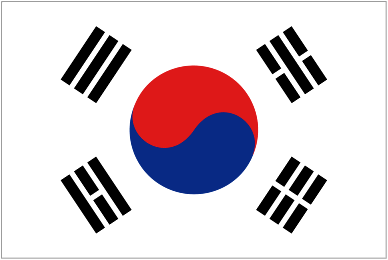
|
STRASBOURG to SARREBOURG (75 km)
|


|  1976 - Vitrail de la paix / Peace Window,
Chapelle des Cordeliers, Sarrebourg (France). Créé par Marc Chagall [1887-1985]. Compare Chagall's peace window at the United Nations in New York City (USA). 1976 - Vitrail de la paix / Peace Window,
Chapelle des Cordeliers, Sarrebourg (France). Créé par Marc Chagall [1887-1985]. Compare Chagall's peace window at the United Nations in New York City (USA).
SARREBOURG to BITCHE (75 km)
|

|  Date? - War Memorial, center of town, Bitche, Moselle Department (France). "Represents the military and civilian casualties of the three big conflicts to sweep through the town -- the Franco-Prussian War, World War I, and World War II. In the center are three comrades, lowering a mortally wounded soldier to the ground. To the left is the wife and family, mourning the soldier but also a symbol that life and the native village will live on. On the far left, is France liberated from her chains, a symbol of World War II, and next to her is Lorraine liberated during World War I. On the right [not visible in image] are symbols of the Citadel de Bitche resisting during the 1870-71 seige." Bitche was on the Maginot Line constructed after World War I. Click here for visit of US veterans of WW-II. Date? - War Memorial, center of town, Bitche, Moselle Department (France). "Represents the military and civilian casualties of the three big conflicts to sweep through the town -- the Franco-Prussian War, World War I, and World War II. In the center are three comrades, lowering a mortally wounded soldier to the ground. To the left is the wife and family, mourning the soldier but also a symbol that life and the native village will live on. On the far left, is France liberated from her chains, a symbol of World War II, and next to her is Lorraine liberated during World War I. On the right [not visible in image] are symbols of the Citadel de Bitche resisting during the 1870-71 seige." Bitche was on the Maginot Line constructed after World War I. Click here for visit of US veterans of WW-II.
|

|  Date? - Citadelle de Bitche, Bitche, Moselle Department (France). "A massive, gray fortification looming over surrounding homes, shops and restaurants. Withstood assault after assault by Bavarian forces for some 230 days following the collapse of the French army in the war of 1870. Visitors today are treated to a multi-media tour through the extensive fortification." Date? - Citadelle de Bitche, Bitche, Moselle Department (France). "A massive, gray fortification looming over surrounding homes, shops and restaurants. Withstood assault after assault by Bavarian forces for some 230 days following the collapse of the French army in the war of 1870. Visitors today are treated to a multi-media tour through the extensive fortification."
BITCHE to FRANKFURT (199 km)



|  1930's - Ouvrage Schoenenbourg, Maginot Line, Hunspach, Alsace (France). "At the east end of the Alsace portion of the Maginot Line, its neighbor is the Gros Ouvrage Hochwald. It is the largest such fortification open to the public in Alsace. Officially recorded as an historical monument, it retains all its original structural elements." 1930's - Ouvrage Schoenenbourg, Maginot Line, Hunspach, Alsace (France). "At the east end of the Alsace portion of the Maginot Line, its neighbor is the Gros Ouvrage Hochwald. It is the largest such fortification open to the public in Alsace. Officially recorded as an historical monument, it retains all its original structural elements."
|



|  1930's - Gros Ouvrage Hakenberg, Maginot Line, Thionville, Lorraine (France). "Volunteers have maintained one block functional, with a working elevator and a turret turnable and lift table. The movement of the turret is shown to visitors. One of the four generators is equipped with a post-WWII engine and also running during sightseeing tours. The electric train in the mountain is used in the tour to transport visitors from the ammunition entry to the functional turret." 1930's - Gros Ouvrage Hakenberg, Maginot Line, Thionville, Lorraine (France). "Volunteers have maintained one block functional, with a working elevator and a turret turnable and lift table. The movement of the turret is shown to visitors. One of the four generators is equipped with a post-WWII engine and also running during sightseeing tours. The electric train in the mountain is used in the tour to transport visitors from the ammunition entry to the functional turret."
|



| 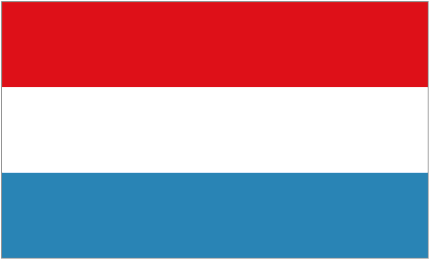 After 1985 - "Schengen Agreement" monument, near Moselle bridge, Schengen (Luxembourg). "Three steel pillars, each with a star represent the first participant countries of the Schengen Agreement, being France, Germany and the Benelux countries, who met here in the triangle where the borders of Germany, France, and Luxembourg meet... This is a treaty signed in 1985, on the river-boat "Princesse Marie-Astrid," providing for the removal of systematic border controls between the participating countries." After 1985 - "Schengen Agreement" monument, near Moselle bridge, Schengen (Luxembourg). "Three steel pillars, each with a star represent the first participant countries of the Schengen Agreement, being France, Germany and the Benelux countries, who met here in the triangle where the borders of Germany, France, and Luxembourg meet... This is a treaty signed in 1985, on the river-boat "Princesse Marie-Astrid," providing for the removal of systematic border controls between the participating countries."
|

|  1965 - Bâtiment Alcide de Gasperi (ou bâtiment "Tour" du Parlement européen), Quartier Européen du Kirchberg, Luxembourg City (Luxembourg). "Construit de 1960 à 1965, constitue avec ses 22 étages le premier 'gratte-ciel' de la ville de Luxembourg." Houses the Secretariat of the European Parliament. 1965 - Bâtiment Alcide de Gasperi (ou bâtiment "Tour" du Parlement européen), Quartier Européen du Kirchberg, Luxembourg City (Luxembourg). "Construit de 1960 à 1965, constitue avec ses 22 étages le premier 'gratte-ciel' de la ville de Luxembourg." Houses the Secretariat of the European Parliament. 
|

|  Date? -
L'ancien hémicyle du Parlement européen à Luxembourg, aujourd'hui un centre de conférence européen. Date? -
L'ancien hémicyle du Parlement européen à Luxembourg, aujourd'hui un centre de conférence européen.

|



| 
 1993 - Mahnmal gegen Rassismus / Monument against Racism, Schlossplatz, Saarbrüken, Saarland (Germany). Also called "Invisible Warning Monument." "Designed by Jochen Gerz in collaboration with students of the College of Fine Arts. On the back of 2,146 paving stones the names of Jewish cemeteries are engraved, which existed before the Second World War in Germany." Outside the castle which used to contain a Gestapo prison.
1993 - Mahnmal gegen Rassismus / Monument against Racism, Schlossplatz, Saarbrüken, Saarland (Germany). Also called "Invisible Warning Monument." "Designed by Jochen Gerz in collaboration with students of the College of Fine Arts. On the back of 2,146 paving stones the names of Jewish cemeteries are engraved, which existed before the Second World War in Germany." Outside the castle which used to contain a Gestapo prison. 
|

| 
 2007 - Solar Peace Sculpture, Saarbrüken, Saarland (Germany). Sponsored by Matter of Trust (San Francisco). Sculpted by Fred George (Saarbrüken & New York City). "Appeals to the global citizen as well as politicians around the world. Symbolically, in addition to the commentary on current wars, this piece represents a call to the world to embrace alternative energies. Standing 50 feet tall Constructed of 120 oil barrels, with a solar energy panel mounted on each barrel. The solar energy produced from the panels will feed into the electrical grid of the city, with the monthly proceeds donated to various local charities. Current proposal locations include Saarbrüken, New York City, and Shanghai."
2007 - Solar Peace Sculpture, Saarbrüken, Saarland (Germany). Sponsored by Matter of Trust (San Francisco). Sculpted by Fred George (Saarbrüken & New York City). "Appeals to the global citizen as well as politicians around the world. Symbolically, in addition to the commentary on current wars, this piece represents a call to the world to embrace alternative energies. Standing 50 feet tall Constructed of 120 oil barrels, with a solar energy panel mounted on each barrel. The solar energy produced from the panels will feed into the electrical grid of the city, with the monthly proceeds donated to various local charities. Current proposal locations include Saarbrüken, New York City, and Shanghai."
|
FRANKFURT to KNOXVILLE
|













